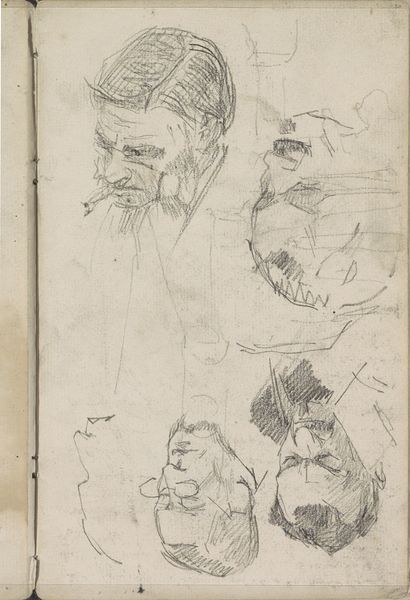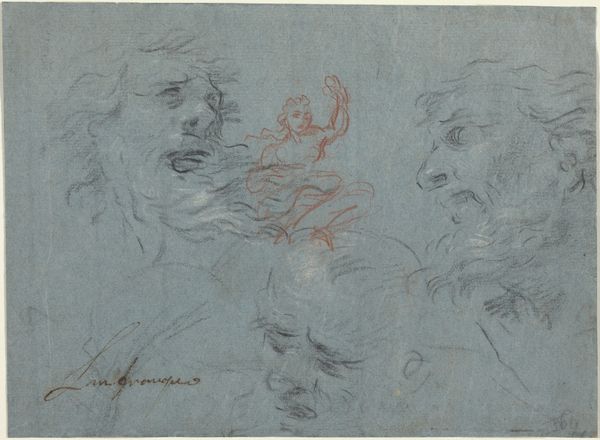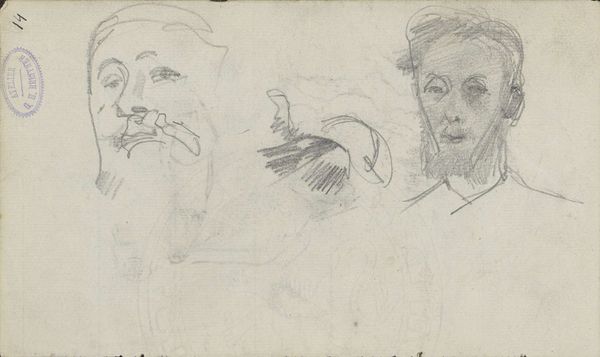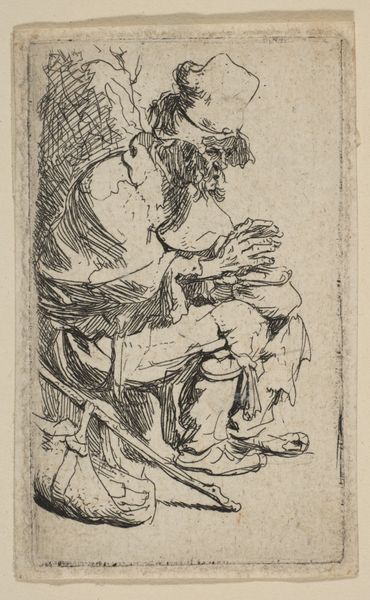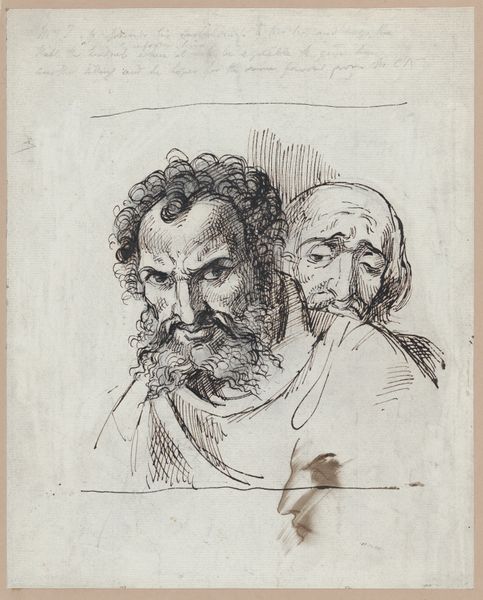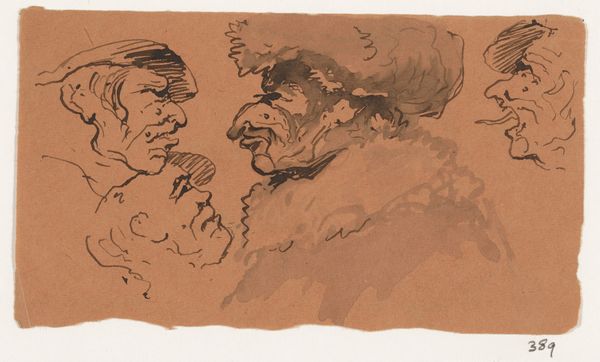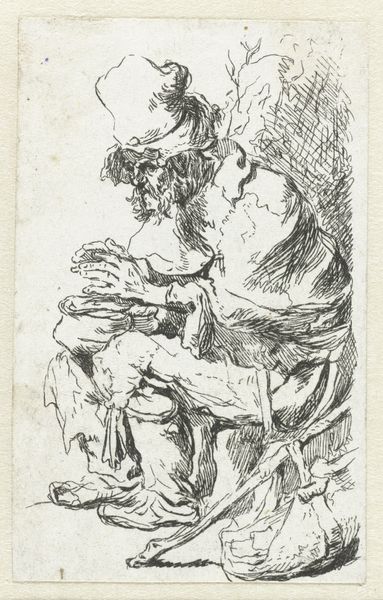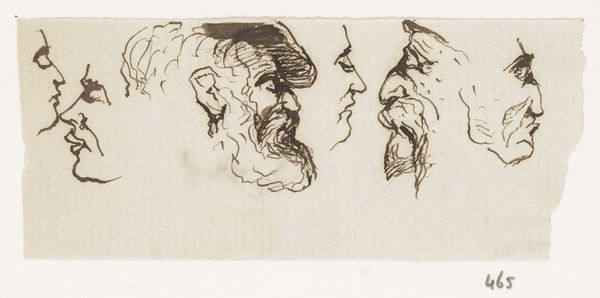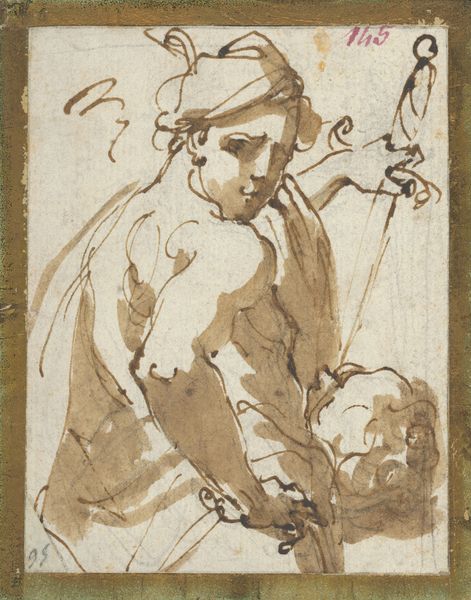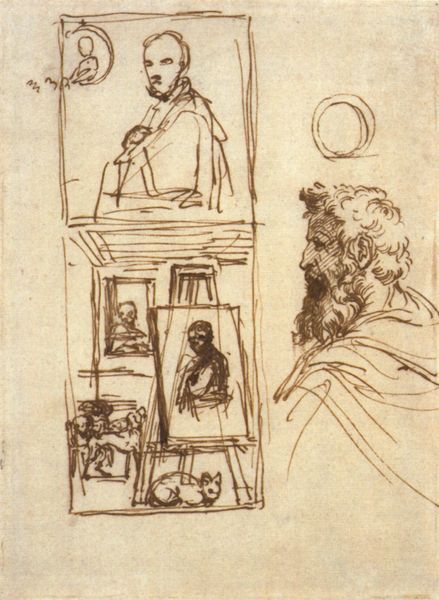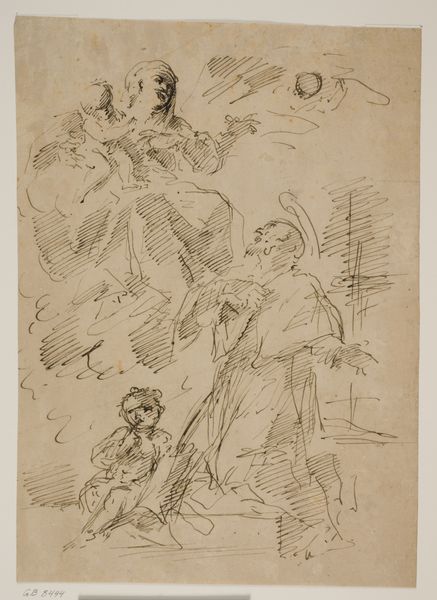
Studienblatt_ Kopf eines Mannes im Profil sowie Brustbild eines Mannes
0:00
0:00
drawing, ink
#
portrait
#
drawing
#
ink drawing
#
figuration
#
ink
Copyright: Public Domain
Jacob de Wit made this study sheet of men’s heads in the 18th century, using pen and brown ink on paper. It’s a great example of the kind of drawing that artists would do in preparation for larger paintings. The rapid lines capture the immediacy of the artist’s observations. Notice how the ink pools in certain areas, creating a sense of depth and shadow. These weren’t industrial materials, but the paper would have been manufactured, and the ink itself was a commodity. Consider the labor that went into making these materials available to de Wit. The artist probably made this drawing in his studio, surrounded by apprentices and assistants. In that sense, even a simple sketch like this is part of a larger network of production. By appreciating the materials and processes that went into this work, we can better understand its cultural significance. It invites us to consider the social and economic context in which art is made.
Comments
No comments
Be the first to comment and join the conversation on the ultimate creative platform.
